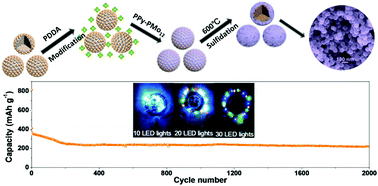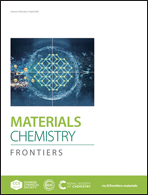SnS@C nanospheres coated with few-layer MoS2 nanosheets and nitrogen, phosphorus-codoped carbon as robust sodium ion battery anodes†
Abstract
Tin sulfide (SnS) is an attractive anode material for energy storage, but suffers from poor reversibility and serious polarization. In this work, to increase electron and ion transportation and the structural stability of SnS, polypyrrole–phosphomolybdic acid-coated SnO2@C spheres were used as self-templates to construct SnS@C nanospheres coated with MoS2 nanosheets and a nitrogen, phosphorus-codoped carbon layer (SnS@C/MoS2@N,P-C). Endowed with a synergetic effect from SnS, MoS2, and the carbon network, SnS@C/MoS2@N,P-C delivered a first reversible capacity of 628 mA h g−1 with a high initial coulombic efficiency of 74.9%, capacity retention of 59.8% over 2000 cycles at 5.0 A g−1 and an exceptional rate capability of 250 mA h g−1 at 10.0 A g−1 when used as an anode material for sodium-ion batteries (SIBs). This high rate capability is possibly promoted by pseudocapacitive behavior attributed to the rich interfaces between the different components. Moreover, an assembled full cell with Na3V2(PO4)3@C as the cathode exhibits a capacity of 455 mA h g−1 at 0.5 A g−1 after 50 cycles, showing good potential for practical applications in the future.



 Please wait while we load your content...
Please wait while we load your content...